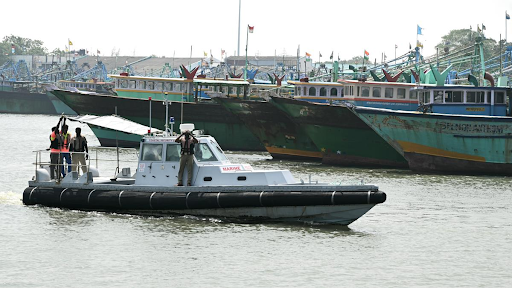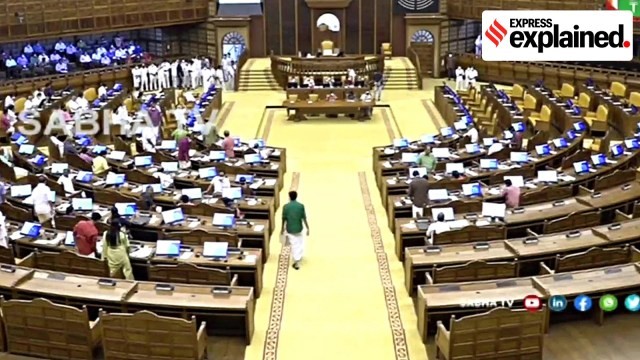




Disclaimer: Copyright infringement not intended.
The Centre extended the ban on the United Liberation Front of Asom (ULFA) for five years, citing continued involvement in criminal activities and extortion and pursuing an objective of secession from India.
It is an armed militant organisation operating in the Northeast Indian state of Assam. It seeks to establish an independent sovereign nation-state of Assam for the indigenous Assamese people through an armed struggle in the Assam conflict. The Government of India banned the organisation in 1990 citing it as a terrorist organization, while the United States Department of State lists it under "other groups of concern".
The United Liberation Front of Assam was formed in April 1979 to establish a sovereign state of Assam for the indigenous people of Assam through an armed struggle. In recent times the organisation has lost its middle rung leaders after most of them were arrested. Assam has seen insurgency by various tribal militant groups, particularly from the 1980s onwards. This was even after Nagaland, Mizoram, Meghalaya, and Arunachal Pradesh were carved out of Assam.
Tribal conflicts |
Assam has 15 recognized tribes in Karbi Anglong and North Cachar Hills, 14 in the rest of the state. Major tribes include Bodo (35%), Mishing (17.52%), Karbi (11.1%), Rabha (7.6%), Sonowal Kachari (6.5%), Lalung (5.2%), Garo (4.2%), Dimasa (3.2%). Bodo groups led the most sustained autonomy movement. |
Immigration |
Large-scale immigration of Bengali-speaking Muslims from Bangladesh has been a source of tension, with Assamese viewing it as a threat to their identity and economy. |
Political Factors |
Movements for sub-regional autonomy, such as the Bodo movement for Bodoland in 1987, often clashed with State Governments and Autonomous Councils. |
Economic Factors |
Economic isolation after partition and perception of resource exploitation by the central government contributed to insurgency in the region. |
Bodo Movement in Assam |
Began in the 1960s with the demand for a homeland for Assam's plains tribal communities, culminating in the formation of ABSU in 1967. Insurgency emerged with Bodo armed groups like NDFB, leading to three accords (1993, 2003, 2020) for greater autonomy and recognition of the Bodo language. |
Karbi Movement |
Militant groups in Karbi Anglong, such as KLNLF, PDCK, and UPLA, demanded an autonomous state since the 1980s. In 2021, a settlement was reached granting greater autonomy to the Karbi Anglong Autonomous Council and a Rs 1,000 crore development package over five years. |
Dimasa Movement |
The Dimasa National Liberation Army (DNLA) emerged as a militant group, with a recent settlement granting similar provisions to those in the Karbi Anglong accord, providing greater autonomy and development funds for Dima Hasao district. |
Ministry of Development of North Eastern Region (DoNER) |
Responsible for planning, execution, and monitoring of development schemes in the North Eastern Region to accelerate socio-economic development. |
Inner Line Permit (ILP) |
Restrictions on outsiders' entry in Mizoram, Nagaland, and Arunachal Pradesh to preserve the identity of indigenous people. Outsiders require ILP for entry. |
Constitutional Provisions |
Article 244(1): Provisions of the 5th Schedule apply to the administration or control of scheduled areas and tribes. Article 244(2): Provisions of the 6th Schedule apply in Assam, Meghalaya, Tripura, and Mizoram to create Autonomous District Councils. |
Autonomous Districts |
Autonomous districts like Karbi Anglong, Khasi Hills, and Chakma District created to address demands of ethnic groups. |
Article 371(A) |
Nagaland has been granted special status under Article 371(A). |
To address regional issues, key measures include enhancing communication and infrastructure for better integration with the mainland, implementing stringent laws and a fast-track criminal justice system for insurgency-related cases, and improving coordination between central and state forces for swift responses.
Promoting greater cultural interaction, inclusive socio-economic development, decentralization, and efficient governance that addresses regional aspirations are also crucial for sustainable peace and progress.
The insurgency in Assam is deeply knotted with the problem of illegal migration, which has fueled tensions since pre-independence. The political will to address the issue is lacking, as vested interests prioritize vote banks over solutions. A practical approach could involve detecting and registering migrants, granting them residential and work permits without voting rights, and legislating protections. Ensuring no future influx is key to mitigating tensions and nurturing stability.
READ HERE
https://www.iasgyan.in/daily-current-affairs/centre-assam-peace-deal-with-ulfa
The Big Picture: End of the Road for Northeast Insurgency
Source:
|
PRACTICE QUESTION Q.Discuss the causes and consequences of insurgency in Assam. How has the state and central government responded to the insurgency, and what challenges remain in achieving lasting peace? (150 WORDS) |





© 2025 iasgyan. All right reserved